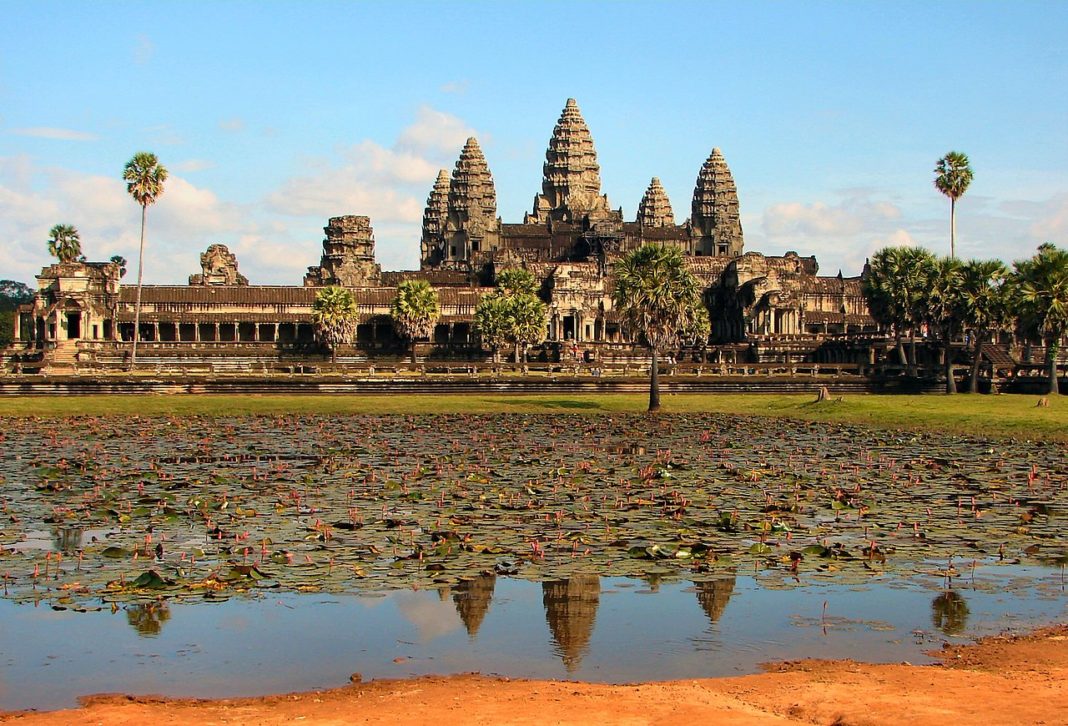Angkor Wat is a temple complex in Cambodia and is the largest religious monument in the world, on a site measuring 162.6 hectares. Originally constructed as a Hindu temple dedicated to the god Vishnu for the Khmer Empire, it was gradually transformed into a Buddhist temple towards the end of the 12th century as such it is also described as a “Hindu-Buddhist” temple.
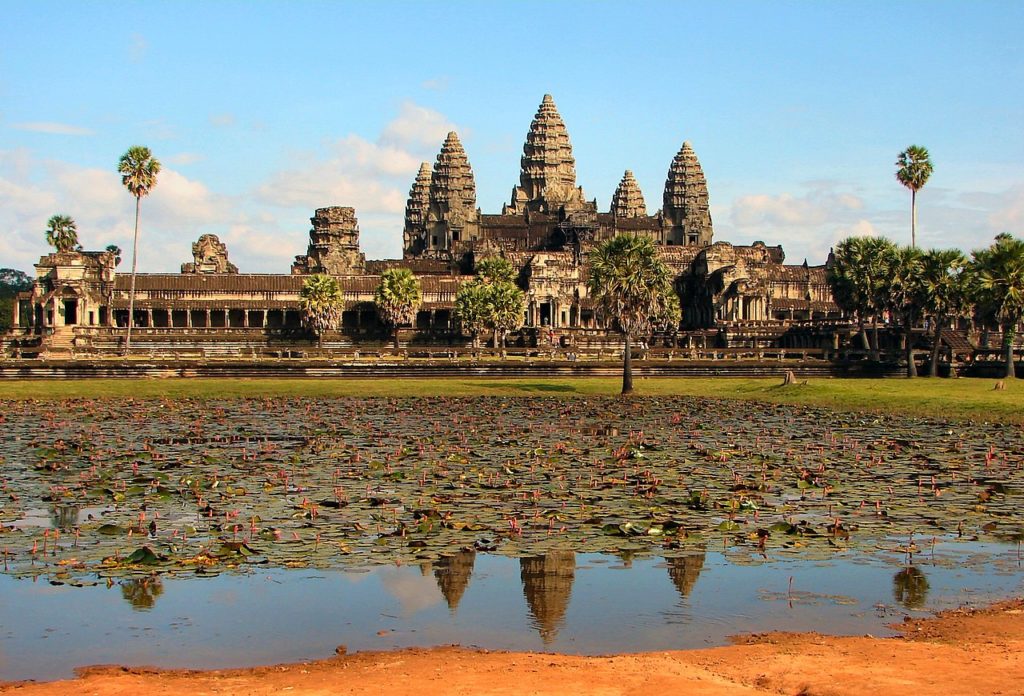
Angkor Wat was built by the Khmer King Suryavarman II in the early 12th century in Yaśodharapura, the capital of the Khmer Empire, as his state temple and eventual mausoleum. Angkor Wat combines two basic plans of Khmer temple architecture: the temple-mountain and the later galleried temple. It is designed to represent Mount Meru, home of the devas in Hindu mythology: within a moat, more than 5 kilometers long and an outer wall 3.6 kilometers long are three rectangular galleries, each raised above the next. At the center of the temple stands a quincunx of towers. Unlike most Angkorian temples, Angkor Wat is oriented to the west; scholars are divided as to the significance of this. The temple is admired for the grandeur and harmony of the architecture, its extensive bas-reliefs, and for the numerous devatas adorning its walls.
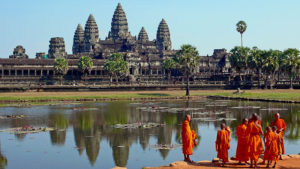
As the best-preserved temple at the site, Angkor Wat is the only one to have remained a significant religious centre since its foundation. The temple is at the top of the high classical style of Khmer architecture. It is one of the most important pilgrimage sites for Buddhists in Cambodia and around the world, having played a major role in converting Cambodia into a Buddhist nation.
Angkor Wat is the prime example of the classical style of Khmer architecture—the Angkor Wat style—to which it has given its name. By the 12th century, Khmer architects had become skilled and confident in the use of sandstone (rather than brick or laterite) as the main building material. Most of the visible areas are sandstone blocks, while laterite was used for the outer wall and for hidden structural parts. The binding agent used to join the blocks is yet to be identified, although natural resins or slaked lime have been suggested.
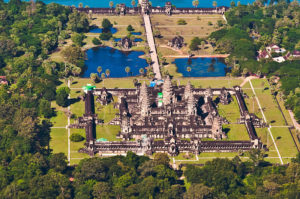
The temple has drawn praise above all for the harmony of its design. According to Maurice Glaize, a mid-20th-century conservator of Angkor, the temple “attains a classic perfection by the restrained monumentality of its finely balanced elements and the precise arrangement of its proportions. It is a work of power, unity, and style.”
Architecturally, the elements characteristic of the style include the ogival, redented towers shaped like lotus buds; half-galleries to broaden passageways; axial galleries connecting enclosures; and the cruciform terraces which appear along the main axis of the temple. Typical decorative elements are devatas (or apsaras), bas-reliefs, and on pediments extensive garlands and narrative scenes. The statuary of Angkor Wat is considered conservative, being more static and less graceful than earlier work. Other elements of the design have been destroyed by looting and the passage of time, including gilded stucco on the towers, gilding on some figures on the bas-reliefs, and wooden ceiling panels and doors.
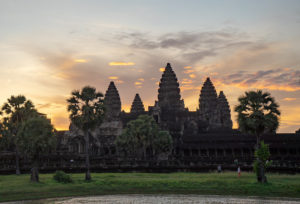
For many years, historians placed the collapse of the Angkor civilization in 1431, when Angkor’s capital city was sacked by the Thai Kingdom of Ayutthaya and abandoned. It was “rediscovered” in the 1840s by the French explorer Henri Mouhot, who wrote that the site was “grander than anything left to us by Greece or Rome.”
Since the 1990s, Angkor Wat has become a major tourist destination. Since Angkor Wat has seen significant growth in tourism throughout the years. UNESCO and its International Co-ordinating Committee for the Safeguarding and Development of the Historic Site of Angkor (ICC), in association with representatives from the Royal Government and APSARA, organized seminars to discuss the concept of “cultural tourism”. Wanting to avoid commercial and mass tourism, the seminars emphasized the importance of providing high-quality accommodation and services in order for the Cambodian government to benefit economically, while also incorporating the richness of Cambodian culture. In 2001, this incentive resulted in the concept of the “Angkor Tourist City” which would be developed with regard to traditional Khmer architecture, contain leisure and tourist facilities, and provide luxurious hotels capable of accommodating large numbers of tourists.
According to Wikipedia





